The Wow Factor of Winter Landscapes
During the colder months, many plants press the snooze button, requiring a period of rest before they resurface, awakened by the allure of the spring sun. While some people may be deceived into thinking their plants have died, this divine winter dormancy can actually be quite a visual delight. Winter landscapes take on a resplendent new shape, color, and personality. The playful dance of peeling bark, native grasses swaying in the cool breeze, sprawling golden lawns, and bursts of vivid berries and blooms mark winter in north Texas. Take a walk through a winter wonderland of our favorite plants, trees, and shrubs that showcase that winter color wow factor.
Lenten Rose
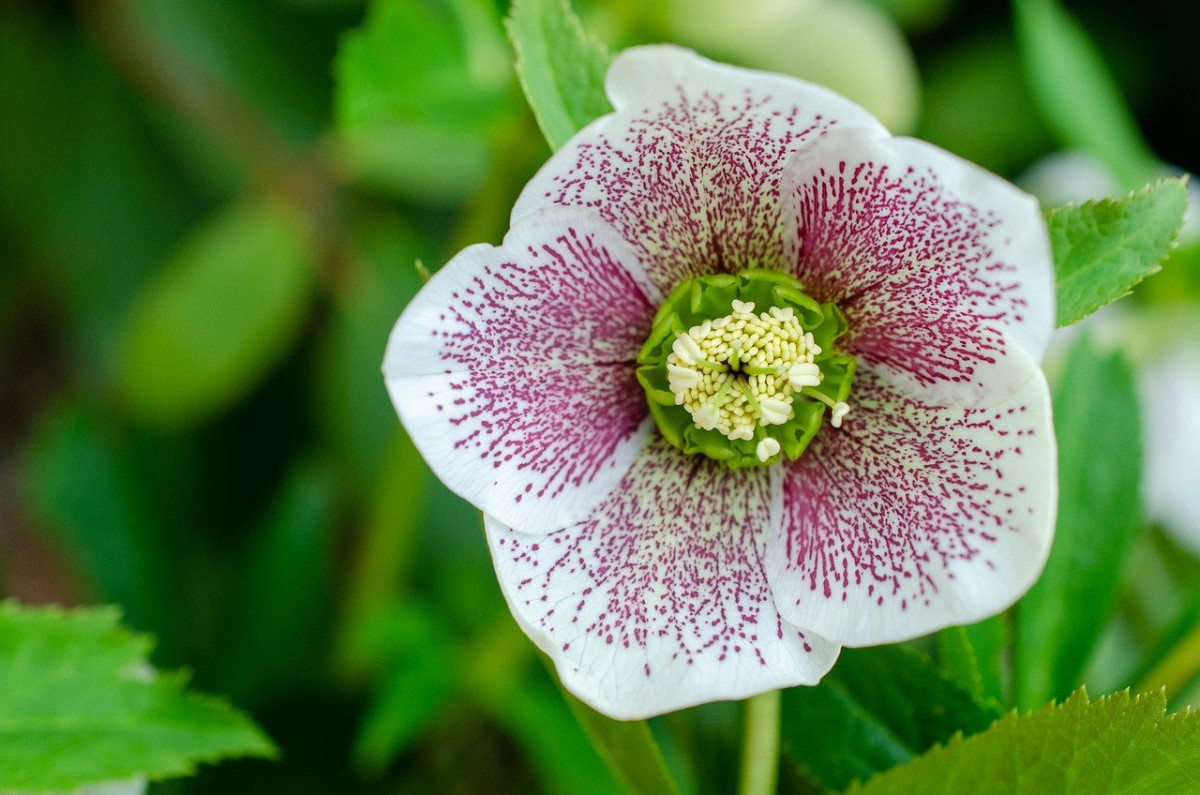
Named after the Christian season of Lent since it coincides with their blooming season, the multi-colored Lenten rose (Helleborus x hybridus) adds whimsy to winter landscapes. Although not actually a rose, this beauty of the buttercup family blooms in late fall to early winter, producing large clusters of purple, red, yellow, green, blue, lavender, and pink flowers from its evergreen foliage. Their contrasting freckles or veins make them quite the show stopper of the holiday season.
Note: The downside of these shade-tolerant stunners is their toxicity to humans, horses, dogs, and cats.
Heavenly Bamboo
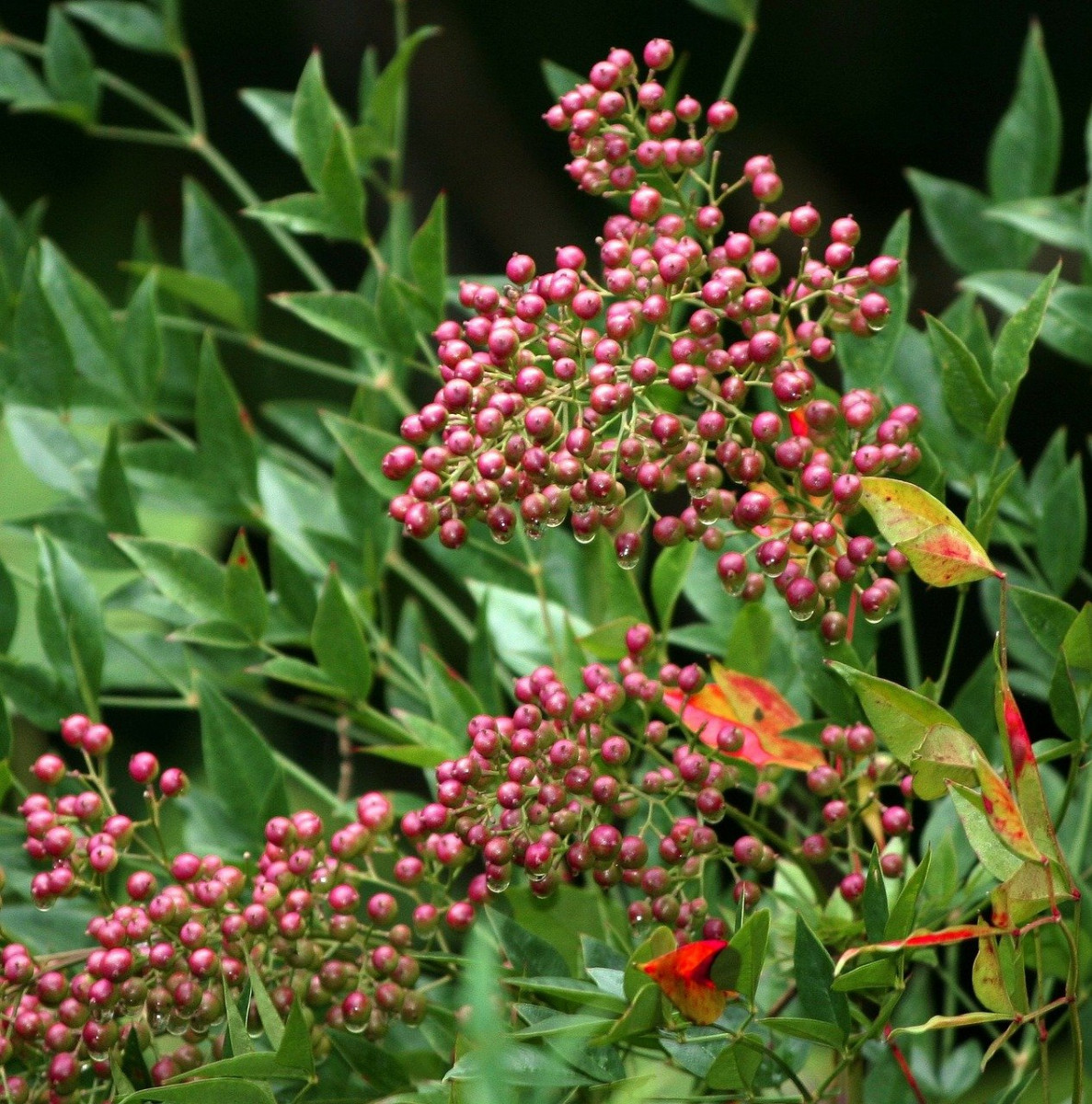
Nandina domestica is not actually in the bamboo family, however, this ornamental evergreen shrub features similar delicate foliage and lightly branched, cane-like stems. Its vibrant red berries actually contain cyanide and can be toxic to cats and dogs, and even birds.
Fun fact: When birds feast upon the festive winter landscape berries in springtime as they ripen, they become intoxicated, and crash haphazardly into windows.
Leather Leaf Mahonia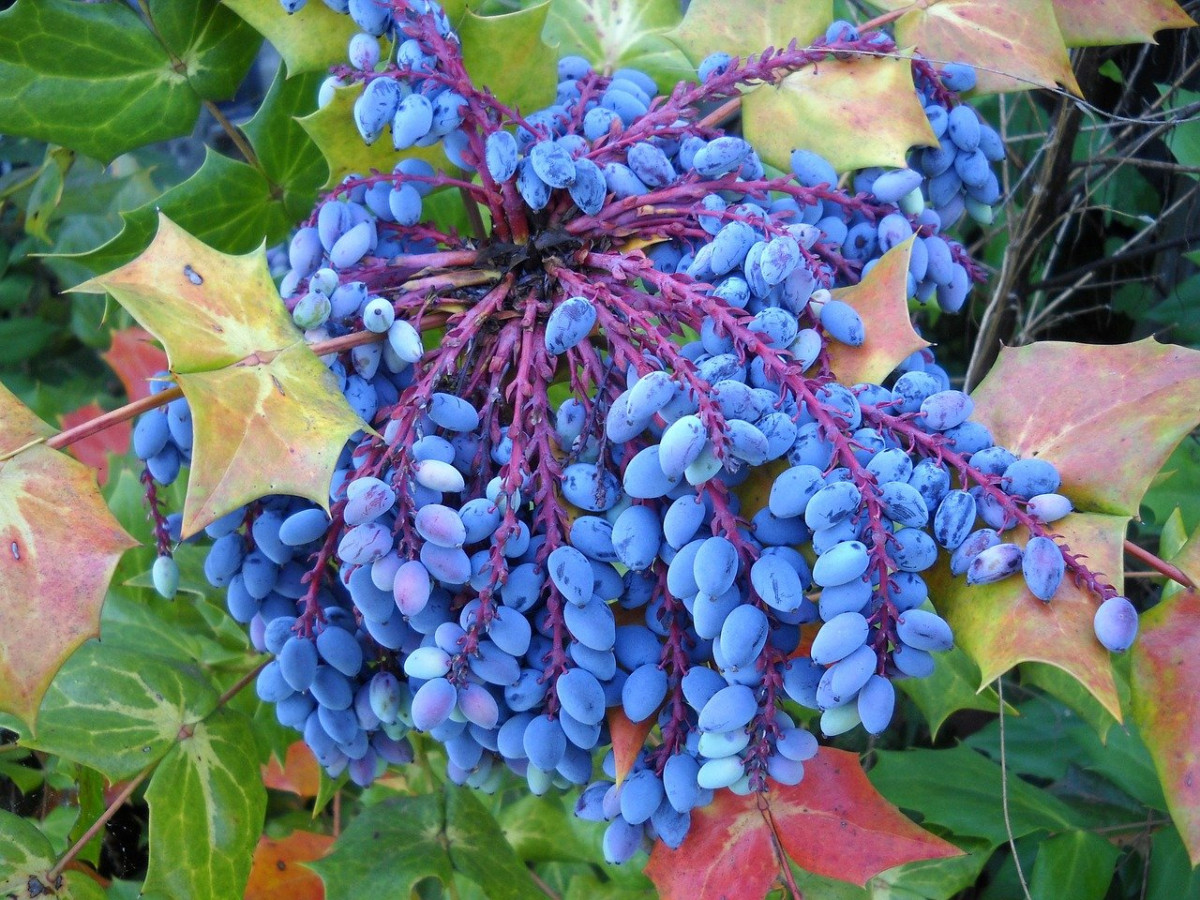
Mahonia bealei, one of the most striking winter landscape shrubs, produces eye-popping purple ornamental berries and boasts fragrant, contrasting yellow blooms in January. A bird-friendly favorite with evergreen foliage, these can be planted in groupings as barriers or borders to increase flower and fruit availability.
Native Grasses
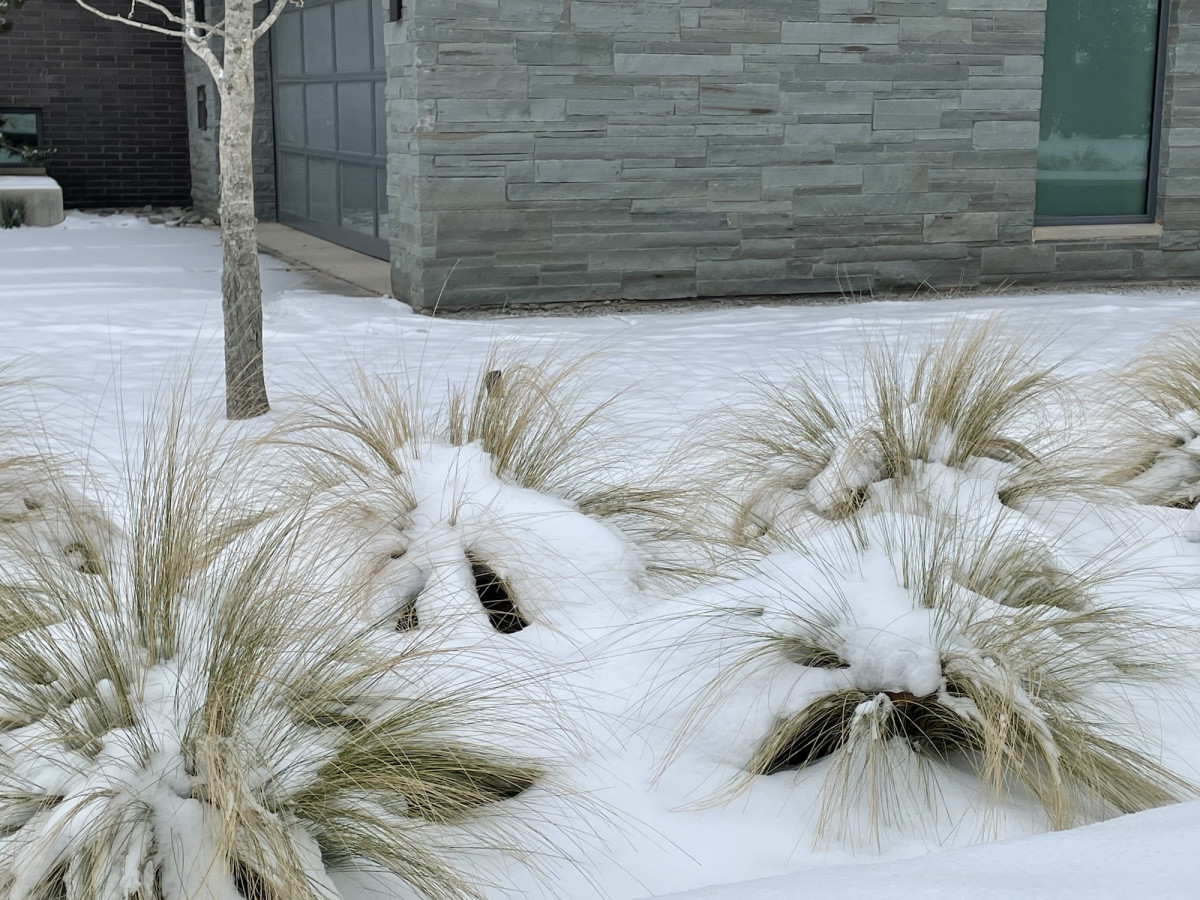
There’s nothing like majestic, snow-capped, spiky plumes of native grasses after a rare, fresh Texas powder coating. These hardy honies sprout straw-like strands during harvest season that create coveted cover for small creatures and are a winter landscape favorite for nest-building birds.
Purple Wintercreeper
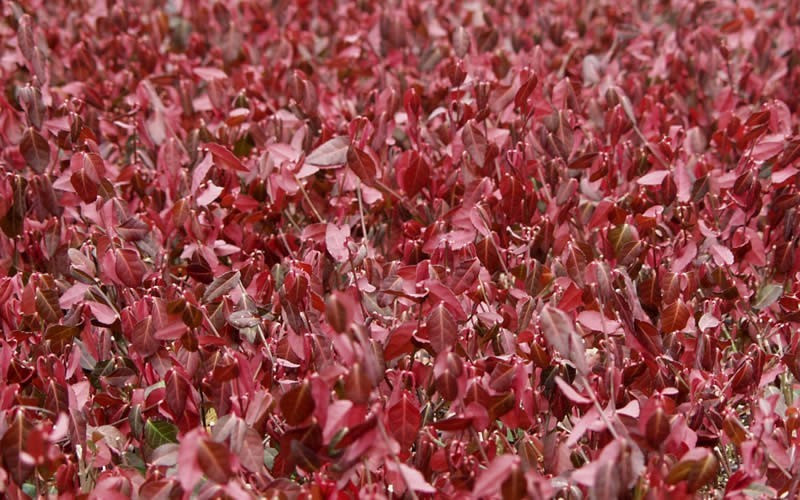
The ivy-like Euonymus fortunei ‘Coloratus’ is a gorgeous ground cover that turns red or deep plum in winter. Boasting extreme cold hardiness, this low, spreading shrub thrives in sunny areas and will even climb walls or structures.
Coral Bark Maple
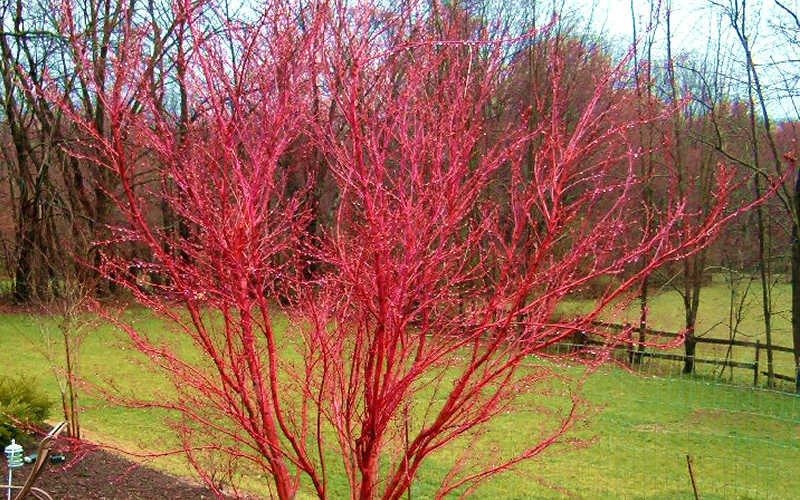
Even tree bark can be beautiful during the winter. Coral bark maples are Japanese maples that draw varying interest with each season. In spring, they bear bright lime green or chartreuse leaves that give way to a deeper shade in summer. They transition to golden yellow to orange foliage in the fall, and as they shed their leaves, their bark turns a radiant reddish-pink, which intensifies as the temperatures drop.
So, awaken your senses and take a fresh look around this winter to experience a new appreciation for the season’s stunning colors and textures. To incorporate color into your winter landscape, contact us for a consultation. Our Bonick garden manager and/or landscape designer will invigorate your garden by selecting the plants best suited for your space to supply fall and winter intrigue.